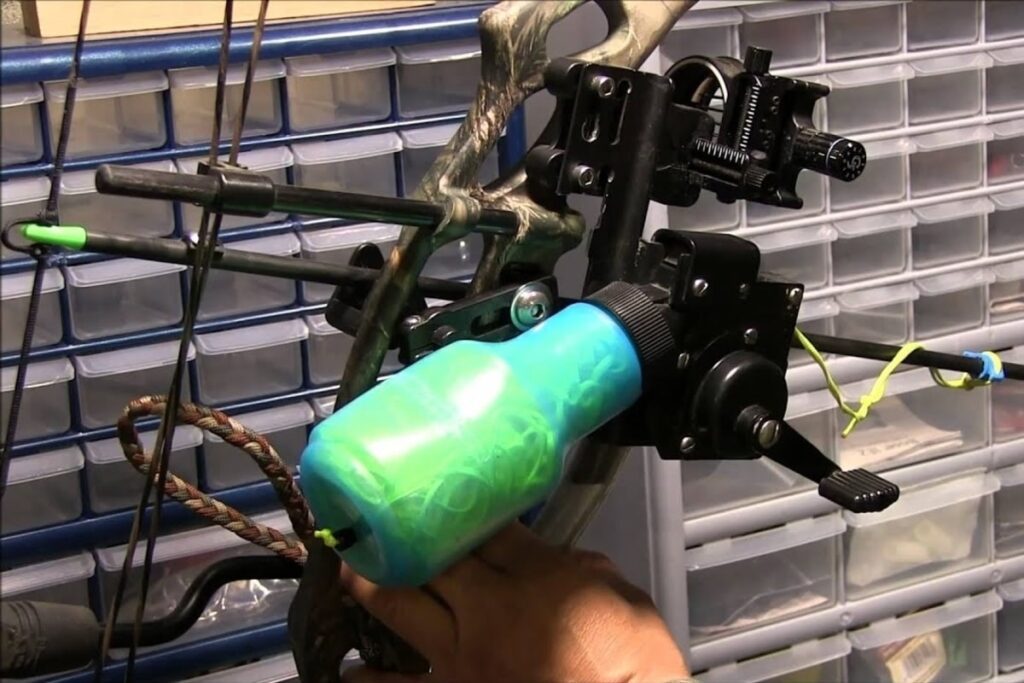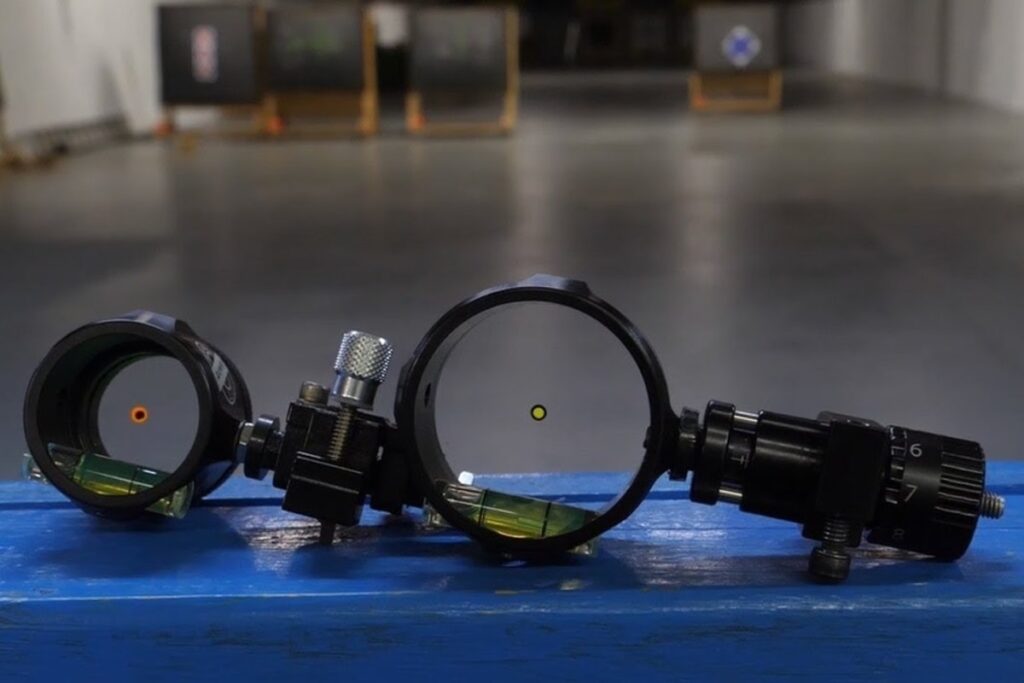If you’re thinking about giving bow fishing a try and are in need of some advice on what type of bow to get for your purpose, then this article is for you.

We will discuss how one goes about choosing the right bow for their own personal needs, whether they be recreational or competitive, as well as provide information on compound bows and lever bows so that you can choose which best suits your individual requirements.
How to Choose the Best Bowfishing Bow
In order to find the right bowfishing bow for you, you first have to define your goals.
1. Specify What You Want From a Bow for Fishing
Are we looking at using a bow for recreation? Or maybe competition? What kind of fish would it be that we want to target with our arrows? Would we like to use an archery-style bow for fishing?
If yes, then there’s much more than simply picking up any old used compound bow from eBay and calling it good enough.
The main thing here is to understand that not all bows perform equally when being drawn through various types of targets, such as water or air.
2. Do Your Research
To make sure you pick out the best bow possible for these purposes, I recommend doing research into each specific style before actually purchasing anything.
Now let us begin by breaking down bow styles according to what part of the draw cycle (the motion of drawing) takes place during the actual release of the arrow (or shot).
3. Determine Which Area of the Draw Cycle Applies to Your Intended Application
During this phase of the process where most of the energy is released, generally speaking, the speed of the arrow increases depending upon which stage of the draw cycle is occurring.
This is why many people refer to different parts of the bow as “fast” or “slow”. Each section of the bow has its own unique characteristics based on its design, size, weight, etc. In general, however, certain sections may be referred to as fast while others are slow.
The fastest part of the draw occurs just prior to releasing the string.
High Draw Power
When someone refers to a particular bow as having “high draw power”, it means that this section of the draw cycle contributes the greatest amount of force towards shooting the arrow forward.
It also tends to produce relatively high velocities since the length of the bow is short compared to other stages of the draw cycle. These factors combine to create very powerful shots.
Low Draw Power
When referring to a bow as possessing “low draw power,” it implies that this portion of the draw cycle generates only minimal amounts of power because it includes comparatively longer lengths of limbs.
Consequently, lower velocities are generated due to the increased distance traveled between releases. Low draw powers are typically associated with recurve designs.
Middle Draw Power
Next comes middle draw power. A common misconception among beginners is that this is the section where maximum velocity is reached. Actually, though, it is the point where the bow reaches full draw.
At this point, the bow is fully cocked but does not yet generate sufficient force to shoot the arrow past the nock point.
Pre-Power and Post-Power
Middle draw cycles usually occur over 2 seconds and consist of two distinct phases: pre-power and post-power.
Pre-power begins after cocking but before reaching full draw. This phase involves rapid acceleration followed by a slower period of acceleration called post-power.
Once again, low draw power is associated with recurve designs, whereas higher draw power indicates compound designs.
Top Draw Power
The final segment of the draw cycle is the top draw power. Here, the bow has been brought almost completely into line. By now, the limb tips have passed beyond the sight plane.
Top draw power lasts approximately 1 second. This last section of the draw cycle produces the least amount of power relative to all previous segments. This is primarily true for recurve bows.
After determining which area of the draw cycle applies to your intended application, there are several things to consider, including overall stability, balance, flexibility, and accuracy, among others.
4. Examine the Stability, Balance, Flexibility, and Accuracy of the Bow
Stability is often defined in terms of smoothness and ease of movement. Balance relates to both the front end and back end of the bow. Flexibility describes how easy the bow is to handle without becoming fatigued.
Accuracy concerns itself with the ability to hit your mark consistently every time. All four areas must be considered together if you wish to avoid injury while hunting.
Compound Bows and Lever Bows for Bowsfishing
Although there are differences in performance between compounds and levers, it doesn’t mean that one should automatically discard the other.
Size
Many users prefer lever systems for their compact size and lightweight nature. Compounds offer greater adjustability and versatility. Both kinds provide great value for money and are built tough for longevity, reliability, and convenience.
Cost
Ultimately, whatever type of bow you decide to purchase, remember that buying it cheap isn’t always better. Cheap materials won’t necessarily translate into quality workmanship either, so shop wisely!
Maintenance
It is important to note that no matter which category you fall within, proper care and maintenance are critical for maintaining optimal performance.
The majority of damage done to bows happens over long periods of usage rather than sudden occurrences.
Taking regular breaks, especially during intense sessions, gives the bow a chance to recover naturally, thus preventing unnecessary stress. Also, don’t neglect routine lubrication and cleaning.
Cleaning and Lubrication
Cleaning will help remove debris buildup, dirt particles, and foreign substances that might otherwise cause problems later on.
Lubricating helps reduce friction caused by contact points, allowing smoother operation. Make sure to apply grease liberally and frequently throughout the season.
As stated earlier, knowing your goals is key. Knowing exactly what you intend to accomplish with your bow is crucial in selecting your new piece of equipment.
Accessories
One of the major considerations when choosing a bow for fishing is what accessories come standard. Most manufacturers include basic fishing kits consisting of rods and reels to accommodate beginner fishermen.
Other items commonly found in bait buckets/live wells include lures, floats, chokers, spinners, spoons, hooks, sinkers, snap swivels, float rings, snap eyes, barbless leaders, fly casters, split shot sleeves, and even small nets.
Some companies go above and beyond the normal offerings and supply their customers with everything needed to catch a trophy-sized game.
The Best Bows for Bowfishing
With this in mind, let’s take a look at some popular choices available today. Below are listed four of the best models currently on the market along with specifications pertaining to draw weight, price range, and features included.
FlexMax Bowfishing Rod and Bait Combo Set
This package contains everything necessary to start catching bass and tilapia
Content
- 3×7′ medium action rod, reel,
- 5lb test mono leader, snap swivel & loop,
- 4ft braided nylon leader rope,
- 20in snap swivel & loop, 8ft spinning net,
- 12-inch pike head jig hook, snap eye stopper & clip,
- 10-foot snap swivel & loop,
- 6 ft light action spinning reel, snap swivel & loop, black color,
- 7 lb test monofilament backing material, snap swivel & loop,
- 30-degree single-cut circle guide,
- 18 gauge steel frame, heavy-duty rubber padding,
- 50-pound capacity carrying case, adjustable padded shoulder strap,
- 100% polypropylene construction, precision balanced shaft system,
- variable rate trigger, cam-actuated control knobs,
- 6061 aircraft-grade aluminum riser tube, silver finish, matte black powder-coated finish, carbon fiber composite grip, soft foam hand rest pad, and
- lifetime limited warranty.
Overview
- Price Range: $139.99-$229.99
- Maximum Draw Length: 75.5 inches
- Draw Weight Capacity: 120 pounds
Archer Series Bolt-On Adjustable Bow Sight Kit
It includes a sight mount bracket, sight pin, sight insert, sight base plate set, sight adjustment screws, sight pins, sight pins wrench, sight pin locking tool, sight pin lock nut, and sight inserts.
Overview
- Price Range: $49.95-$59.95
- Maximum Draw Length: 70 inches
- Draw Weight Capacity: 150 pounds
- Holds: 0-2 lbs., 15-24 oz. draw weights
Recurve Bowfishing Bow Review:
Patriot Recurve Bowfish Hybrid Pro II
With its sleek modern design, the Patriot offers the finest combination of strength, durability, comfort, and performance.
Overview
- Price Range: $299.00
- Maximum Draw Length: 67.75 inches
- Draw Weight Capacity: 130 pounds
Its patented dual flex technology provides unparalleled smoothness and consistency. You’ll find yourself amazed at how easily your arm works with the smoothness and consistent aim provided by this incredible bow.
It’s accurate, reliable, durable, and strong. It looks cool too!
Savage Xtreme XP10X Powerstroke Bowfishing Rod
Made specifically for serious anglers who demand uncompromising strength, the Savage Xtreme XP10X was designed to deliver unmatched performance.
Overview
- Price Range: $179.99-$199.99
- Maximum Draw Length: 68 inches
- Draw Weight Capacity: 200 pounds
Boasting a laminate wood core wrapped in ballistic-grade leather, this versatile rod puts big fish firmly in your hands.
Whether you’re stalking walleye, largemouth bass, northern pike, trout, bluegill, or perch, Savage Xtreme XP10X delivers unrivaled strength, exceptional bite resistance, and outstanding shock absorption. Constructed of premium components, the XP10X is backed by a lifetime guarantee against defects.
Wrap Up
Hopefully, this article has helped shed some insight regarding what makes up the world of bow fishing. While researching my next article, I plan on covering topics concerning the art of lure casting and related techniques. Until then, happy fishing!

